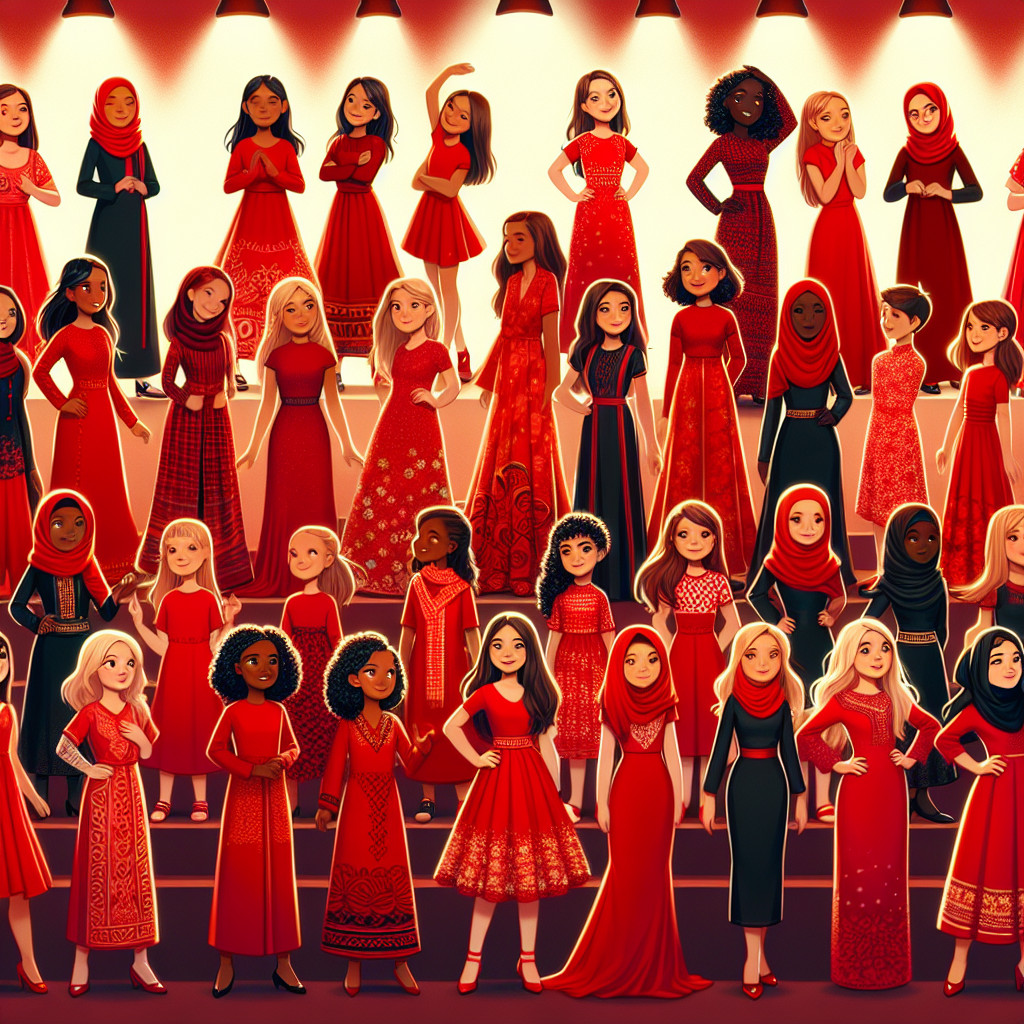The Cultural Significance of Red Dresses in Girls’ Fashion
Red dresses have long held a special place in the realm of girls’ fashion, serving not just as garments but as symbols imbued with rich cultural meanings. Historically, the color red has been associated with various emotions and concepts, including passion, love, courage, and celebration. This multifaceted color evokes strong feelings and represents individuality, making red dresses particularly impactful in girls’ wardrobes.
Historical Context
In different cultures, red has varied meanings. For instance, in ancient China, red symbolizes happiness and good fortune, often worn during celebrations such as weddings and festivals. This significance extends to young girls, who don red dresses during festivals, reinforcing their connection to joy and prosperity. Similarly, in Western cultures, red has often been associated with feminine power and influence. Iconic figures in history, mythology, and literature frequently donned red attire, portraying strength and bravery—qualities that resonate with young girls aspiring to assert their identities.
Artistic and Media Influence
The influence of popular culture cannot be understated. Numerous films and books feature young female protagonists adorned in striking red dresses, reinforcing the idea that red signifies strength and independence. The classic tale of Little Red Riding Hood portrays the character as adventurous, while sophisticated fashion icons like Dorothy from “The Wizard of Oz” wear red shoes, emphasizing that the journey toward self-discovery is both bold and beautiful. These characters serve as role models for girls, inspiring them to embrace their unique personalities as they don similar vibrant attire.
Symbolism in Celebratory Events
Many cultures recognize red as a color of celebration. From traditional Christmas parties to prom nights, red dresses project a sense of festivity. During milestone events such as birthdays or performances, wearing a red dress empowers young girls, marking their transition into a broader social context. For parents, this choice often signifies the beauty of childhood and the celebration of formative moments. Additionally, red enhances visibility during special occasions, allowing young girls to stand out and command attention both socially and culturally.
Psychological Impact
Psychologically, wearing a red dress can instill confidence in young girls. Research suggests that colors affect mood and perception—red is known to stimulate excitement and energy. When girls wear red, they may embody these characteristics, fostering self-esteem and encouraging self-expression. This color can counteract feelings of insecurity during crucial moments, such as stage performances or important events. The empowerment felt when wearing red is not merely anecdotal; it is rooted in substantial psychological principles regarding color theory.
The Role of Fashion Designers
Fashion designers also play a pivotal role in cementing the cultural significance of red dresses. Renowned fashion houses often include red dresses in their collections aimed at young girls, highlighting the color’s ability to enhance both aesthetics and emotional resonance. Designers like Ralph Lauren, Valentino, and others have embraced the versatility of red, creating everything from classic silhouettes to avant-garde styles. These selections mirror the societal acceptance of individuality and encourage girls to embrace their unique styles while celebrating the color’s universal charm.
Social Media and Trends
In the age of social media, red dresses have garnered attention through platforms like Instagram and TikTok, where influencers showcase their iconic looks. This exposure helps to normalize the wearing of red garments among young girls, promoting trends that align with cultural narratives about empowerment and confidence. Tagging posts with relevant hashtags can amplify significance, connecting girls globally in a tapestry of red-dress moments that celebrate their collective experiences.
Feminine Identity and Expression
Red dresses can also reflect the evolving concept of femininity in society. They empower young girls to express their individuality while embracing the traditionally feminine aspect of fashion. Today’s generation is more inclined to challenge gender norms, and the red dress serves as a canvas for exploring these themes. As girls wear red dresses, they can symbolize their acceptance of femininity while also redefining it according to their terms.
Sustainability and Ethical Fashion
In the contemporary fashion landscape, there has been a push towards sustainability and ethical practices. Parents and designers alike are increasingly aware of the environmental implications of fashion choice. The enduring popularity of red dresses drives interest in sustainable fashion practices, encouraging the purchase of ethically produced clothing. This not only supports cultural significance but also instills values of responsibility and conscientious consumerism in young girls.
A Cultural Legacy
The cultural significance of red dresses in girls’ fashion transcends mere aesthetic appeal. It embodies a historical legacy rich with meaning, encouraging personal expression, and fostering unity in diversity. Color theory, powerful narratives in literature and media, and social media trends further solidify red dresses as deeply impactful items in girls’ wardrobes. Ultimately, the red dress emerges as a powerful emblem of identity, resilience, and cultural celebration in girls’ fashion.



